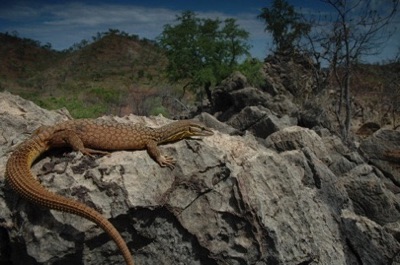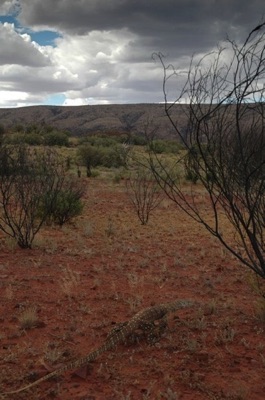LIZARD RESEARCH
Habitat use and morphological diversification
Habitat use likely plays an important role in evolutionary diversification because it influences the environmental circumstances and biotic interactions species experience and therefore shapes many of the selective demands imposed on them. In lizards, structural habitat use---the substrate on which a lizard is found (for example, a tree branch, rock crevice, sand dune)---determines the functional requirements for effective movement, available refuges to hide from predators, and the number and type of interacting organisms. Evolutionary transitions in habitat use are therefore likely to be associated with shifts in functional and ecological demands and ultimately morphological divergence. For this reason, habitat differences may help explain the variety of forms we see among lizard species.
Lab work on lizard diversification is inspired by two compelling patterns regarding how structural habitat affects diversification of body and limb form.

Varanus acanthurus (the spiny tailed monitor) is a small rock-dwelling monitor. Photo by Rich Glor (used with permission).
Varanus giganteus (also known as the perentie) is Australia’s largest monitor. Photo by Rich Glor (used with permission)

2) In dragon lizards (Agamidae), structural habitats are associated with different rates of body, limb, and tail evolution. This variation in rates of diversification among habitat types likely results from differences in the uniformity and stringency of habitat-imposed functional and ecological demands (see Collar et al. 2010, Journal of Evolutionary Biology). Terrestrial dragon lizards, which have diversified relatively rapidly, may diverge from one another to use many different kinds of flat surfaces, such as sandy deserts or highly vegetated forest floors. In contrast, rock-dwelling and arboreal agamids may be constrained to forms that prevent falling from steeply inclined surfaces.
1) In monitor lizards (Varanus), the three predominant habitat use patterns---rock-dwelling, arboreality and terrestriality---correspond to disparate adaptive optima that have led to divergence in adult body size among species that use different habitats. Terrestrial monitor lizards, including the largest extant lizard species, the Komodo dragon (Varanus komodoensis), have evolved toward a very large size optimum, while rock-dwelling and arboreal species have become small (see Collar et al. 2011, Evolution). This finding indicates that transitions in habitat use are strongly linked to shifts in morphological evolution, as body size evolves in response to new habitat-specific functional and ecological demands.
The photos below show individuals from two monitor lizard species that differ in structural habitat use.

Collar Lab
Christopher Newport University